| Parent company | Brigham Young University |
|---|---|
| Founded | 1967 |
| Country of origin | United States |
| Headquarters location | Provo, Utah |
| Distribution | Chicago Distribution Center |
| Publication types | Books |
Brigham Young University Press (BYU Press) was the university press of Brigham Young University (BYU). [1]
Brigham Young University Press was formed in 1967 through the consolidation of BYU's various publishing activities into one central organization. [2]
In its prime, BYU Press was a robust press publishing in a wide array of subjects, such as interior design, preschools, dancing, and wood-burning, as well as intellectual, scholarly and fine arts titles. [3] [4] In 1974, the press published Roughing it Easy: A Unique Ideabook for Camping and Cooking, by Dian Thomas, which later made the New York Times Best Seller list. [5]
The press also published works for Latter-day Saint readers and scholars, including BYU speeches and symposia proceedings and the periodical BYU Studies . [6] Amongst its major publications in Church history are James B. Allen's Studies in Mormon History series, several of the "Charles Redd Monographs in Western History", the LDS Church's 1965 reprint of A Comprehensive History of the Church of Jesus Christ of Latter-day Saints , Fox and Quinn's biographies of J. Reuben Clark, and Davis Bitton's Guide to Mormon Diaries and Autobiographies. The press itself received a 1978 Special Citation from the Mormon History Association for encouraging and publishing fine Church histories that year. [7] Many of its LDS books have been published in conjunction with Deseret Book. It also maintained the imprint "Young House" during the 1970s. [8] [9] [10]
BYU Press had a reputation of selecting for publication only church approved material. Press officials scrutinized and rejected manuscripts they found too technical or too controversial. These rejections include Dennis Lythgoe's Let 'Em Holler: A Political Biography of J. Bracken Lee, Béla Petsco's Nothing Very Important and Other Stories (1979 AML Best Fiction Award winner), and Science and Religion: Toward a More Useful Dialogue by several BYU faculty. [5] [11] In 1973, BYU Press recalled Thomas Cheney's The Golden Legacy: A Folk History of J. Golden Kimball, a new release, over concerns with some of Kimball's vulgar language. [5] The book was edited and republished by Peregrine Press in 1974.
Financial troubles struck the press in the late 1970s, leading to a decision for it to only print internal university publications, [5] making it essentially defunct for many authors and scholars. [12] In 1984, the press was replaced by BYU Print Services [3] and has since merged with BYU Mail Services to become BYU Print and Mail. [13]
In 1997, BYU Press returned as a logo under the Academic Vice President's office, intended for use with expanded distribution of some titles to other university libraries. Officials made clear that BYU Press would not be an organization or an office. The return was inspired by the production of new religious texts and the university's desire to clear out manuscripts to focus on publishing the papers of LDS Church founders Joseph Smith and Oliver Cowdery, which were then being developed by BYU's Joseph Fielding Smith Institute for Latter-day Saint History. [3] In 2005, the Joseph Smith Papers Project transferred from BYU to LDS Church headquarters, and began publication in 2008 with a new imprint, the Church Historian's Press, rather than BYU Press. The Church Historian's Press may also publish the George Q. Cannon journals, [14] another project formerly slated for BYU Press. [15]
Some notable recent publications by BYU Press:
BYU Press has also produced electronic resources from the LDS Church's historical records including Selected Collections from the Archives of The Church of Jesus Christ of Latter-day Saints and BYU Family History Digital Archive. For publication information, contact the BYU Press or Brigham Young University Religious Studies Center (RSC).
Before achieving wide notability, and after his own theater company failed, Orson Scott Card worked as a proofreader, then copy editor at BYU Press. In this role he met Calvin Grondahl, whose Mormon-themed cartoons were rejected by BYU Press, yet he would later illustrate one of Card's early works, the 1981 Saintspeak . [16] Card's role at BYU Press led to his later editing job at the LDS Church's Ensign magazine. [17]
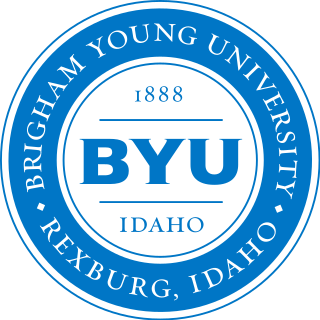
Brigham Young University–Idaho is a private college in Rexburg, Idaho. Founded 136 years ago in 1888, the college is owned and operated by the Church of Jesus Christ of Latter-day Saints. Previously known as Ricks College, it transitioned from a junior college to a baccalaureate institution in 2001.
Mormon fiction is generally fiction by or about members of the Church of Jesus Christ of Latter-day Saints, who are also referred to as Latter-day Saints or Mormons. Its history is commonly divided into four sections as first organized by Eugene England: foundations, home literature, the "lost" generation, and faithful realism. During the first fifty years of the church's existence, 1830–1880, fiction was not popular, though Parley P. Pratt wrote a fictional Dialogue between Joseph Smith and the Devil. With the emergence of the novel and short stories as popular reading material, Orson F. Whitney called on fellow members to write inspirational stories. During this "home literature" movement, church-published magazines published many didactic stories and Nephi Anderson wrote the novel Added Upon. The generation of writers after the home literature movement produced fiction that was recognized nationally but was seen as rebelling against home literature's outward moralization. Vardis Fisher's Children of God and Maurine Whipple's The Giant Joshua were prominent novels from this time period. In the 1970s and 1980s, authors started writing realistic fiction as faithful members of the LDS Church. Acclaimed examples include Levi S. Peterson's The Backslider and Linda Sillitoe's Sideways to the Sun. Home literature experienced a resurgence in popularity in the 1980s and 1990s when church-owned Deseret Book started to publish more fiction, including Gerald Lund's historical fiction series The Work and the Glory and Jack Weyland's novels.
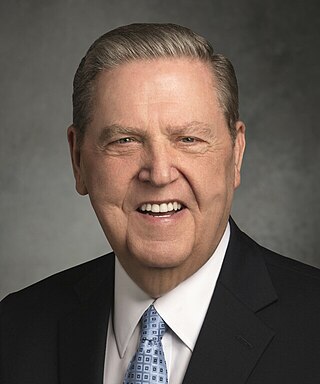
Jeffrey Roy Holland is an American educator and religious leader. He served as the ninth President of Brigham Young University (BYU) and is the acting president of the Quorum of the Twelve Apostles of the Church of Jesus Christ of Latter-day Saints. As a member of the Quorum of the Twelve, Holland is accepted by the church as a prophet, seer, and revelator. Currently, he is the third most senior apostle in the church.
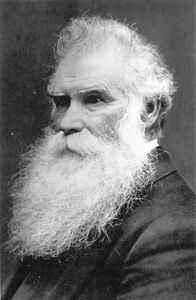
Orson Pratt Sr. was an American religious leader and mathematician who was an original member of the Quorum of the Twelve Apostles of the Church of Christ. He became a member of the Quorum of the Twelve of the Church of Jesus Christ of Latter-day Saints and was a leading Mormon theologian and writer until his death.
Samuel Woolley Taylor was an American novelist, scriptwriter, and historian.

Ernest Leroy Wilkinson was an American academic administrator, lawyer, and prominent figure in the Church of Jesus Christ of Latter-day Saints. He was president of Brigham Young University (BYU) from 1951 to 1971, simultaneously overseeing the entire LDS Church Educational System (CES). He is credited with the expansion of BYU. Under his presidency, the student body increased six times to over 25,000 students due to the university's physical growth and his aggressive recruiting policies; the number of colleges at the university increased from five to thirteen, and the number of faculty members increased four-fold. Wilkinson focused on recruiting more faculty and convincing current faculty to receive education outside the university. As a result, the number of teachers with doctorate degrees increased from 50 to 500. Associate and doctoral programs were created for BYU.

The Seer was an official periodical of the Church of Jesus Christ of Latter-day Saints which first appeared in 1853 and was published throughout 1854.
Student life at Brigham Young University is heavily influenced by the Church of Jesus Christ of Latter-day Saints. The school is privately owned by the church and aims to create an atmosphere in which secular and religious principles are taught in the same classroom.

Ronald Davis Bitton was a charter member and president of the Mormon History Association, professor of history at the University of Utah, and official Assistant Church Historian in the Church of Jesus Christ of Latter-day Saints working with Leonard J. Arrington.
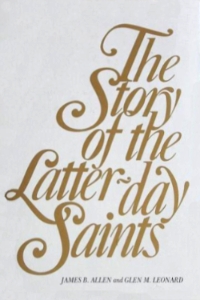
The Story of the Latter-day Saints is a single-volume history of the Church of Jesus Christ of Latter-day Saints by James B. Allen and Glen M. Leonard, first published in 1976.
James Brown Allen is an American historian of Mormonism and was an official Assistant Church Historian of the Church of Jesus Christ of Latter-day Saints from 1972 to 1979. While working as Assistant Church Historian, he co-authored The Story of the Latter-day Saints with Glen Leonard. After Ezra Taft Benson dismissed the book as secular new history, other events led to the dissolution of the LDS Church History department in 1982. Allen resigned as Assistant Church Historian in 1979, returning to work at Brigham Young University (BYU) full-time.
Richard Douglas Poll was an American historian, academic, author and member of the Church of Jesus Christ of Latter-day Saints. His liberal religiosity influenced his notable metaphor about "Iron Rod" vs. "Liahona" LDS Church members.
Richard Eyring "Rick" Turley Jr. is an American historian and genealogist. He previously served as both an Assistant Church Historian of the Church of Jesus Christ of Latter-day Saints and as managing director of the church's public affairs department.
The Religious Studies Center (RSC) is the research and publishing arm of Religious Education at Brigham Young University (BYU), sponsoring scholarship on the culture, history, scripture, and doctrine of the Church of Jesus Christ of Latter-day Saints. The dean of Religious Education serves as the RSC's director, and an associate dean oversees the two branches of the RSC: research and publications.

The 1911 modernism controversy at Brigham Young University was an episode involving four professors at Brigham Young University (BYU), who between 1908 and 1911 widely taught evolution and higher criticism of the Bible, arguing that modern scientific thought was compatible with Christian and Mormon theology. The professors were popular among students and the community but their teachings concerned administrators, and drew complaints from stake presidents, eventually resulting in the resignation of all four faculty members, an event that "leveled a serious blow to the academic reputation of Brigham Young University—one from which the Mormon school did not fully recover until successive presidential administrations."
The Seventh East Press (7EP) was an American student newspaper at Brigham Young University (BYU) in Utah that published 29 issues from October 6, 1981, to April 1, 1983. Its peak was 4,000 copies. The newspaper was banned from being sold on campus in February 1983 after publishing an interview with Sterling M. McMurrin, a former institute teacher of the Church of Jesus Christ of Latter-day Saints who stated that he never literally believed in the Book of Mormon. Afterwards, the 7EP's sales notably decreased, and it ceased publication later that year. Several contributors had their faithfulness questioned by their local leadership at the request of LDS Church leader Mark E. Petersen.
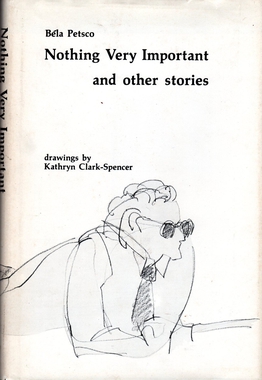
Nothing Very Important and Other Stories is a collection of interconnected short stories written by Béla Petsco and self-published in 1979 with illustrations by his friend Kathryn Clark-Spencer. The stories are about missionaries from the Church of Jesus Christ of Latter-day Saints working in Southern California. Signature Books reprinted the book in 1984 under their Orion imprint. Petsco wrote the stories for his master's thesis at Brigham Young University (BYU). The book won the 1979 Association for Mormon Letters award for short fiction. The stories were adapted for theater and performed in 1983, but without BYU's endorsement.
Béla Petsco was an American writer who was the author of Nothing Very Important and Other Stories, a collection of connected stories about missionary work in the Church of Jesus Christ of Latter-day Saints. He was born to Hungarian immigrants and grew up in Queens in New York City. He converted to the LDS Church after watching the film Brigham Young. He served an LDS mission in the California South mission.